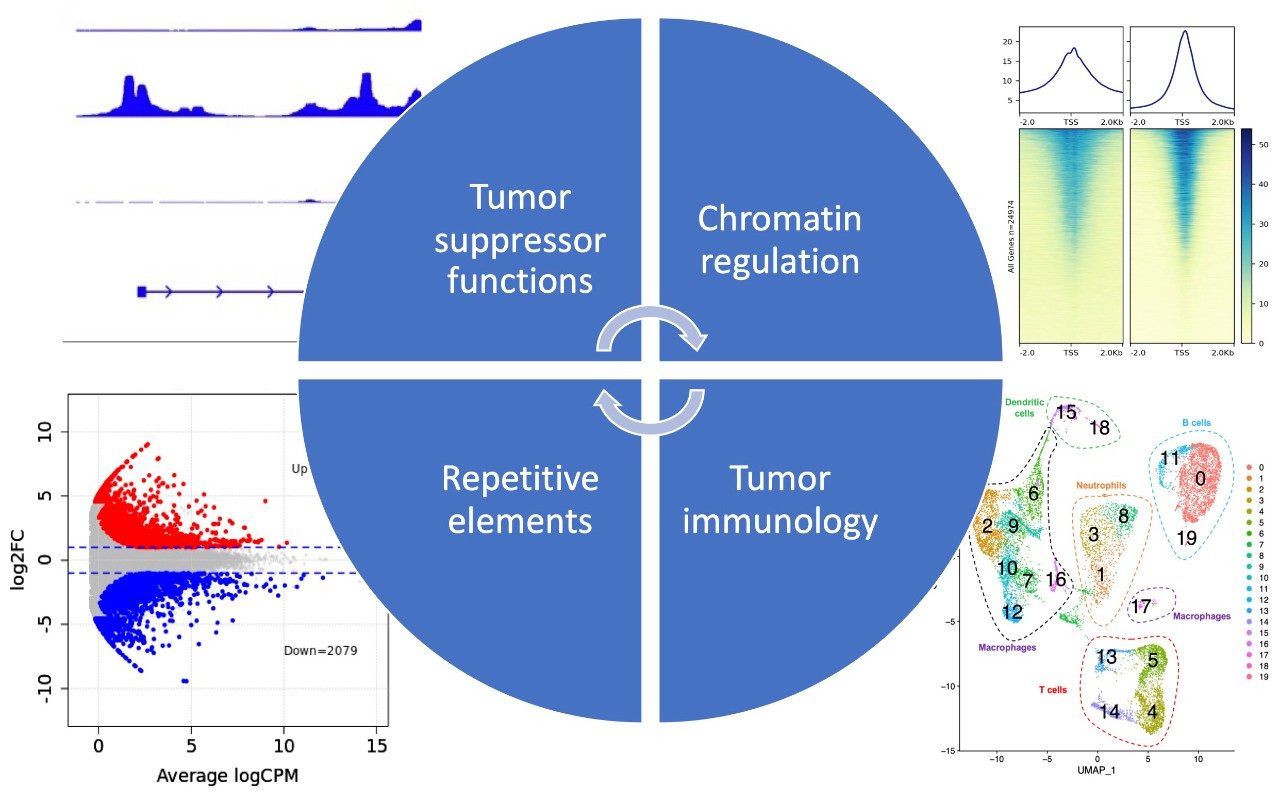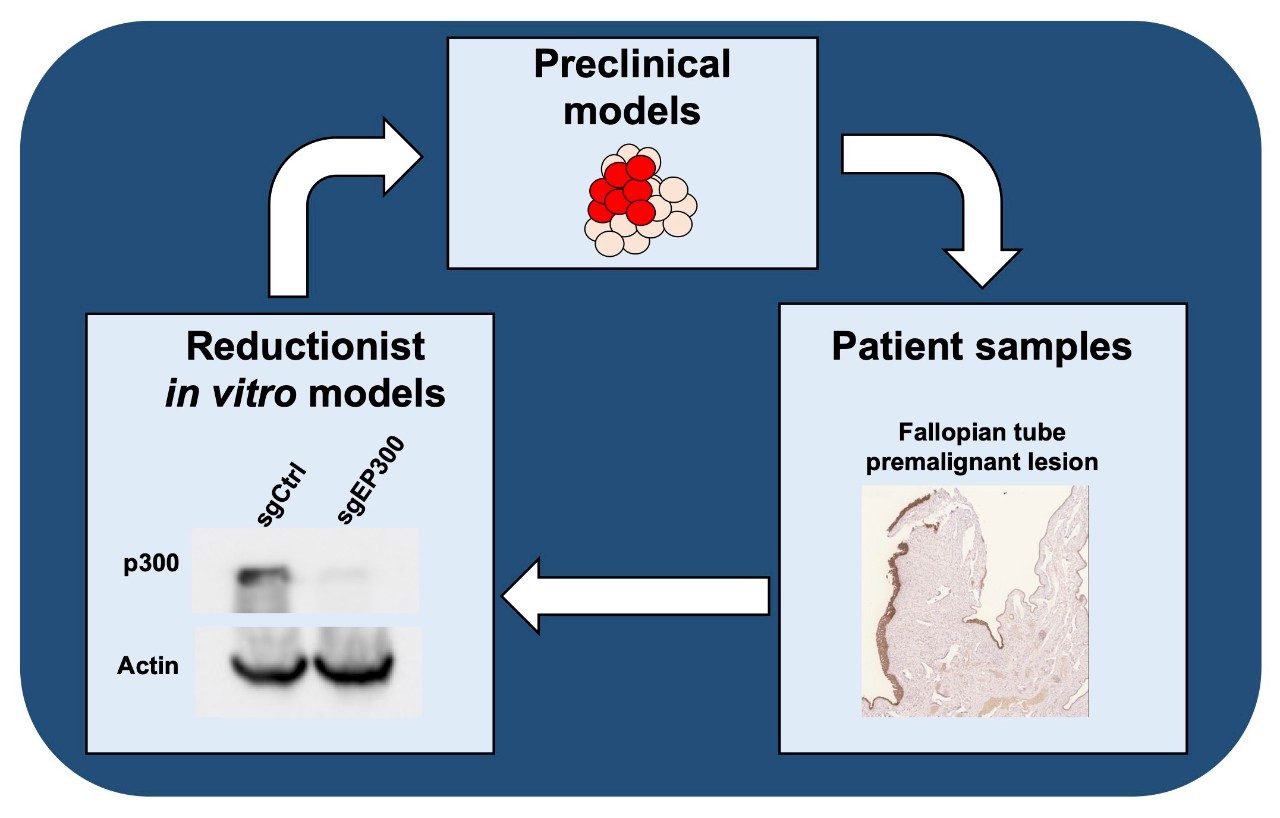Research
The overarching goal of the Ishak Laboratory is to define the roles of repetitive DNA elements in cancer initiation, development, and therapeutic response to improve both cancer immunotherapies and cancer interception and immunoprevention approaches. Toward this goal, the lab strives to translate basic research discoveries into clinical trials in order to improve cancer patient outcomes.
Only about 2% of the DNA sequences in the human genome encode proteins. The other 98% of DNA sequences are non-coding sequences, and nearly half of those sequences represent repetitive DNA elements. Research in the Ishak Lab is based on his foundational discovery that inactivation of canonical tumor suppressor proteins, such as pRB and p53, leads to expression of normally repressed repetitive DNA, as an early event that precedes cancer initiation. Acute expression of repetitive elements can activate an antiviral response that stimulates the immune system to cull cancer cells in a process referred to as “viral mimicry.”

Paradoxically, cancers appear to tolerate sustained expression of repetitive elements and escape lethal viral mimicry responses through mechanisms that remain poorly understood. The Ishak lab explores how cancers evade viral mimicry during cancer initiation and whether repetitive elements directly contribute to the acquisition of cancer hallmarks throughout carcinogenesis. By exploring the roles of repetitive elements during carcinogenesis, the lab expects to identify vulnerabilities that can be exploited as novel therapeutic targets to improve cancer patient outcomes.

The lab’s current research program focuses on repetitive DNA sequences during initiation of ovarian high grade serous carcinoma (HGSC). HGSC accounts for about 75% of epithelial ovarian cancers and is marked by poor patient outcomes due, in part, to late-stage symptom onset and diagnosis. The tumor suppressor gene TP53, which encodes p53 and is implicated in silencing repetitive DNA expression, is almost universally inactivated as an initiating event in HGSC and is commonly inactivated in many other cancer types.
The lab is exploring the mechanistic relationships between TP53 mutation, repetitive element expression and HGSC initiation. The discoveries made while defining the interactions between p53 and repetitive elements during HGSC initiation are expected to be generally applicable to the majority of human cancers that inactivate p53.

To study the role of repetitive elements during cancer initiation, the Ishak lab draws from the experience of and unites basic scientists, clinicians and computational biologists who characterize archived patient tissues and primary cells to obtain direct insights into human disease. The lab uses preclinical models to uncover interactions between cancer precursor cells and the immune system and to test strategies to target repetitive elements as cancer immunotherapies and cancer-interception strategies.
Major research directions include:
- Defining roles of repetitive elements in cancer initiation and immune evasion
- Defining roles of repetitive elements in tumor suppression and cellular homeostasis
- Leveraging repeat RNA and proteins as targets for cancer interception and cancer immunotherapy
